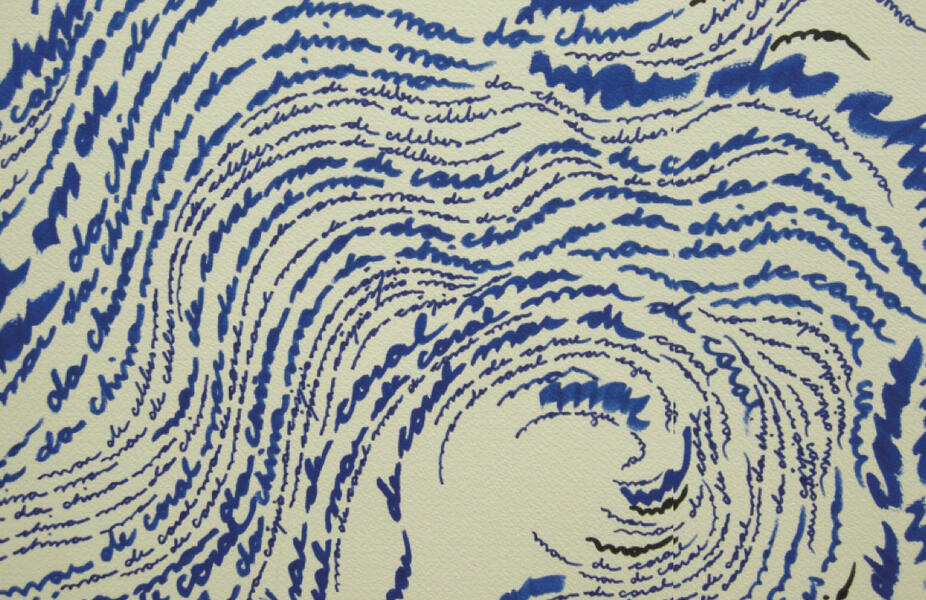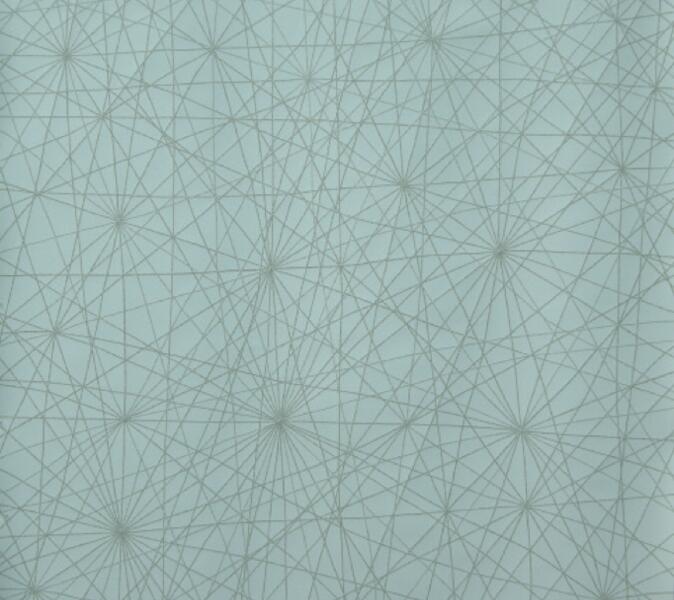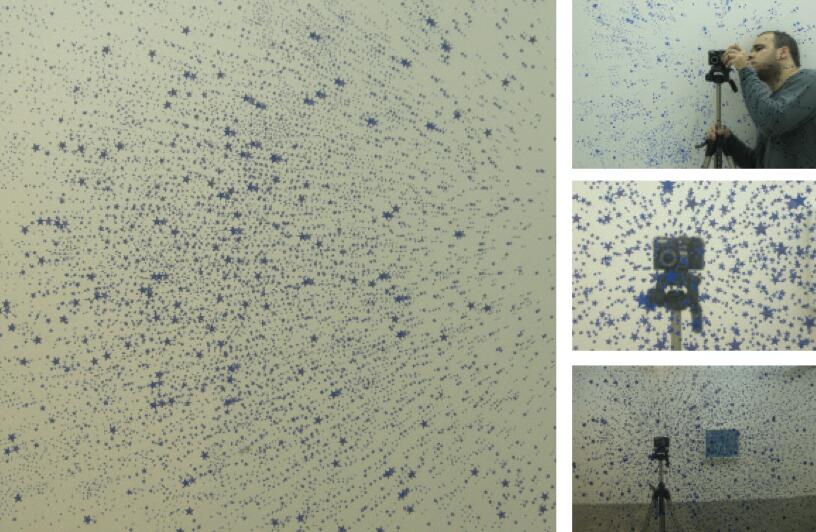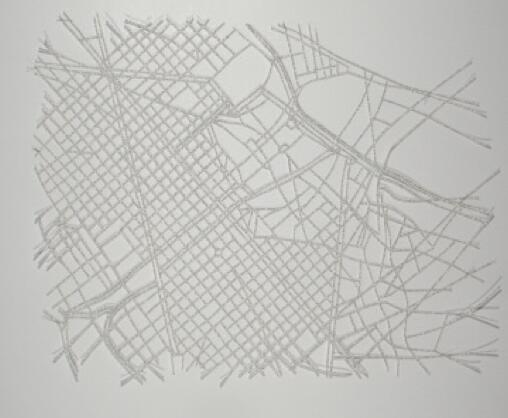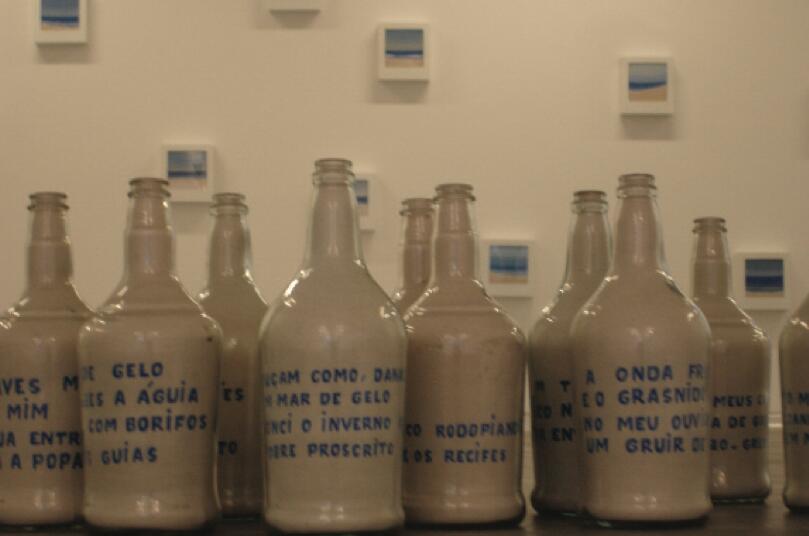Rosana Ricalde
A World Made of Words
In an article published in 20011, art critic Guy Brett marked out an interesting genealogy of Brazilian artists for whom the creation of books constituted a fundamental exercise, essential for the poetics of each one of them and, by extension, for that of a whole context.
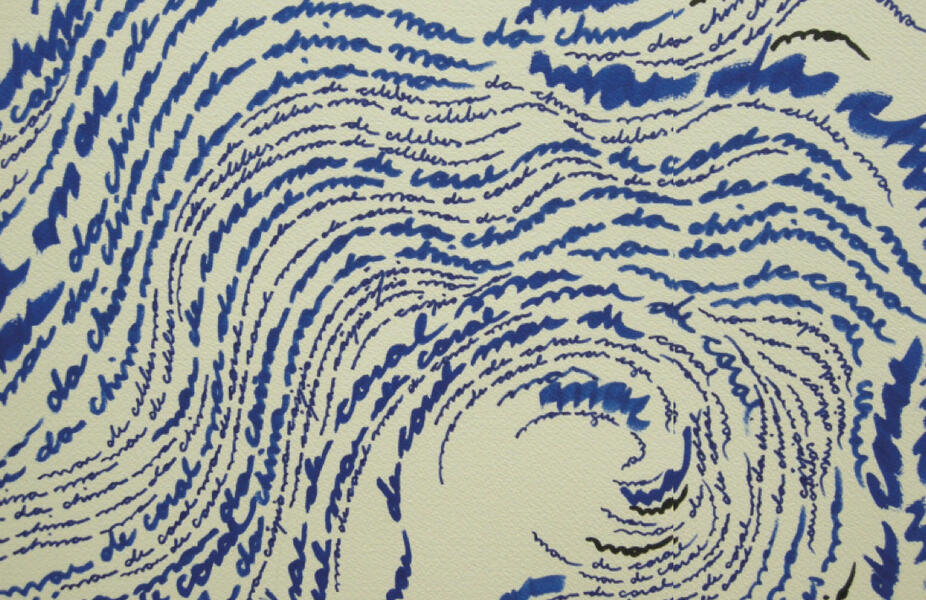
Brett’s analysis was focused on the period of the avant- garde movements of the late 1960s and early 1970s, therefore including the names of Hélio Oiticica (1937-1980), Mira Schendel (1919-1988), Lygia Clark (1920-1988), Lygia Pape (1927-2004) and Raymundo Colares (1944-1986), among others, but the attraction to books and, in more general terms, to writing, continues to exist in a relatively submerged although quite vigorous way in contemporary production. The utilization of words and phrases that are sometimes references and direct quotations excerpted from literary and/or poetic passages, is in fact extremely widespread: suffice it to recall, to mention just a few names, the work of Nuno Ramos (1960), who besides including fragments of poems and sambas frequently in his works, is actually the author of essays and texts of great quality and interest; Laura Vinci (1962), who has produced an already extensive series of works comprised exclusively of writings on ice; Rivane Neuenschwander (1967), who has already photographed and inserted (or in other cases, erased) marks, names, and letters from license plates or billboards in several of her works; Marilá Dardot (1973), for whom literature constitutes a universe that gives rise to practically all of her creations; and we could also mention, among many others, Paulo Bruscky (1949), Lenora de Barros (1953), Angela Detanico and Rafael Lain (1974 y 1973), to demonstrate that the interest in words is widespread and generalized, without any kind of geographic or generational limitation.
In such rich panorama, the trajectory of Rosana Ricalde (Niterói, Rio de Janeiro, 1971) is undoubtedly one of the most conspicuous, in the first place, because of the artist’s consistency in the methodical construction of a corpus of works in which words and names constitute the true raw material. As Rosana herself comments, her production acquired an identity and a mature personality following the execution of a work presented for the first time in 2002, Alfabeto de verbos (Verb Alphabet), in which “I typed all the verbs in the Portuguese language on labels, and stuck them on 42 panels”.2 Despite the apparent simplicity of the work, it already hinted at some characteristics that would eventually become constant in the artist’s work; in the first place, the physical effort which, in spite of its being sublimated or diluted by the lightness of the works on many occasions, is an underlying element in all of them. In the case of Alfabeto de verbos, more than fourteen thousand verbs were compiled and transcribed, an evidently tedious work that somehow brings to mind the infinite and nowadays almost inconceivable task of mediaeval copyists. An analogous effort may be perceived in the series produced in 2006 and collectively titled Todos os nomes (All the names), constituted by an ensemble of plates measuring 100 by 100 centimeters, tautologically covered with all the male names that exist in the Portuguese language, written by the artist on labelling tape. These two works make it evident that the manual aspect of the act of writing is a central element in the artist’s modus operandi, justifying the comparison with the copyists’ activity. However, this effort may go beyond mere writing and also include mnemonic exercises, as demonstrated by another work realized in 2006, As cidades e a memória (Cities and memories), which besides including a compilation of names, was among the first to adopt the shape of a city blueprint, which has since then appeared quite frequently in Rosana’s work. Here the artist reconstructed, solely on the basis of her own memory, the blueprint of the city of Natividad, including the names of the streets and of all the inhabitants she could recall. In this huge drawing, the river that crosses the city, reproduced in a much more lively way than it would appear on a conventional blueprint, introduced the theme of water, which prevailed in her production of the following years.
The series of large drawings, sometimes left without a title, or in other cases bearing the name of seas, executed on paper, wood or cloth, in which the names of seas and oceans (in this case, “barely” fifty something...) are carefuly written by the artist in such a way as to create the shapes of huge waves, probably constitutes Rosana’s best-known creations. In some cases, the waves are stylized, almost abstract; in other cases, they are more vigorous and even vaguely threatening, but the differences between one version and the other go far beyond that: sometimes the drawing is on white paper; sometimes it extends over several pages, each in a different tone of blue, or even painted by the artist in watercolor with different tones, creating a pattern similar to the one used in charts to indicate the depth of the water; even the names of the seas may be written in different tones of blue, or in green; and when the waves rise more wildly, the names are often written in white, as if representing the foam that streaks the crests of the waves on windy days; sometimes, whirlpools that capture the eye of the viewer appear in the midst of the waves. Curiously, and almost as if to confirm the artist’s attunement with Zeitgeist, it seems possible to compare these drawings with those of other contemporary Brazilian artists: Sandra Cinto, who during the past four years has produced a huge ensemble of works focusing on the theme of the sea, culminating in a major exhibition the past year at the Tomie Ohtake Institute in Sao Paulo, and Paulo Climachauska, whose drawings based on subtractions bordered several times on the subject of nature and water, as in the case of the installation performed in 2002 for the 1st Ceará America Biennial. In spite of the singularity of her work, Rosana Ricalde is ultimately an artist who holds an intense and undeniable dialogue with all the trends in the rich Brazilian contemporary production and also with the foreign ones, if we consider the close relationship between the series titled Cidades invisíveis (Invisible Cities) (2009), in which the blueprints of different cities are built patiently using phrases excerpted from Ítalo Calvino’s homonymous book, and the blueprints of cities manipulated by Jorge Macchi (whom Rosana did not know at the time when she created her series). Despite the evident formal resemblance, the points of departurs of the two works are far apart, almost opposed: if for the Argentine artist it was a question of depriving the cities of everything except their streets (or their channels, in the case of Venice or Amsterdam), Rosana’s construction was based on nothing; it might be said that her books and her words were all she had; nothing precedes her words, and yet they suffice, without any doubt, to draw the world.
1 Brett, Guy, “The Logic of the Web”, in Forma Brazil, The Americas Society, New York, 2001.
2 MANNARINO, Ana and MAROJA, Camila, Rosana Ricalde: Depoimento compartilhado, text/interview published in the book Rosana Ricalde, Rio de Janeiro, 2009, p. 218.
Profile:
Rosana Ricalde was born in Niterói (RJ) in 1971. Trained at the School of Fine Arts of the Federal University of Rio de Janeiro, she currently lives and works in that city. Among her most relevant solo shows, mention may be made of Mundo Flutuante (Baró Cruz Gallery, Sao Paulo, 2009), O Percurso da Palavra (Banco do Nordeste Cultural Center, Fortaleza, 2009), Mar de Papel (Galería 3 + 1, Lisbon), La Casa del Lago, in collaboration with Felipe Barbosa (UNAM, Mexico City, 2007), Palavra Matéria Escultórica (Museum of Contemporary Art, Niterói, 2004). She has also participated in important group exhibitions, among them, the CNI-SESI Marcantonio Vilaça Award (Museum of Modern Art, RJ and Museum of Contemporary Art, SP, 2010), O lugar da linha (MAC Niterói, 2010), Nova Arte Nova (Bank of Brazil Cultural Center), RJ and SP, 2008 and
2009), 5th Sao Tome and Principe Biennial (2008), Geração da virada (Tomie Ohtake Institute, Sao Paulo, 2006), InSite 05, in collaboration with Felipe Barbosa (San Diego, USA / Tijuana, Mexico, 2005).

